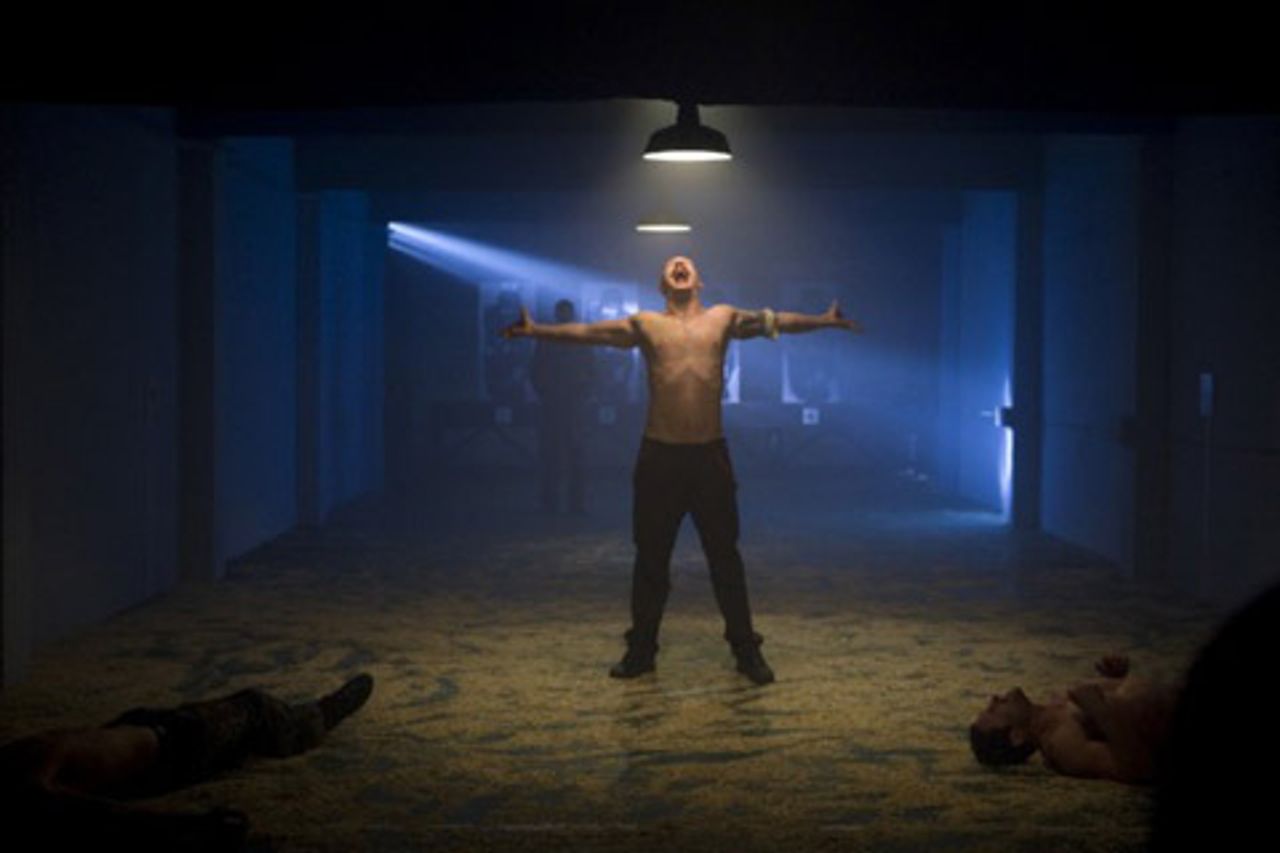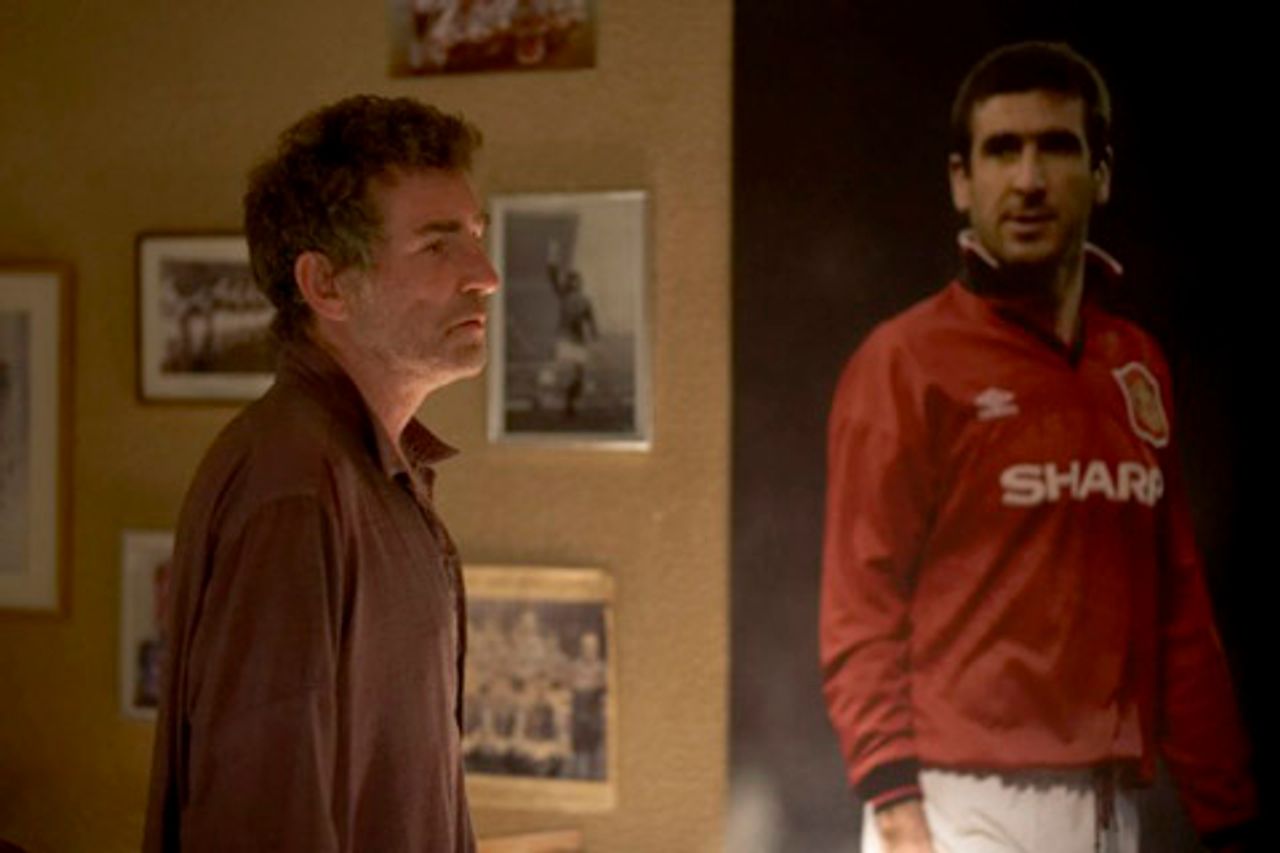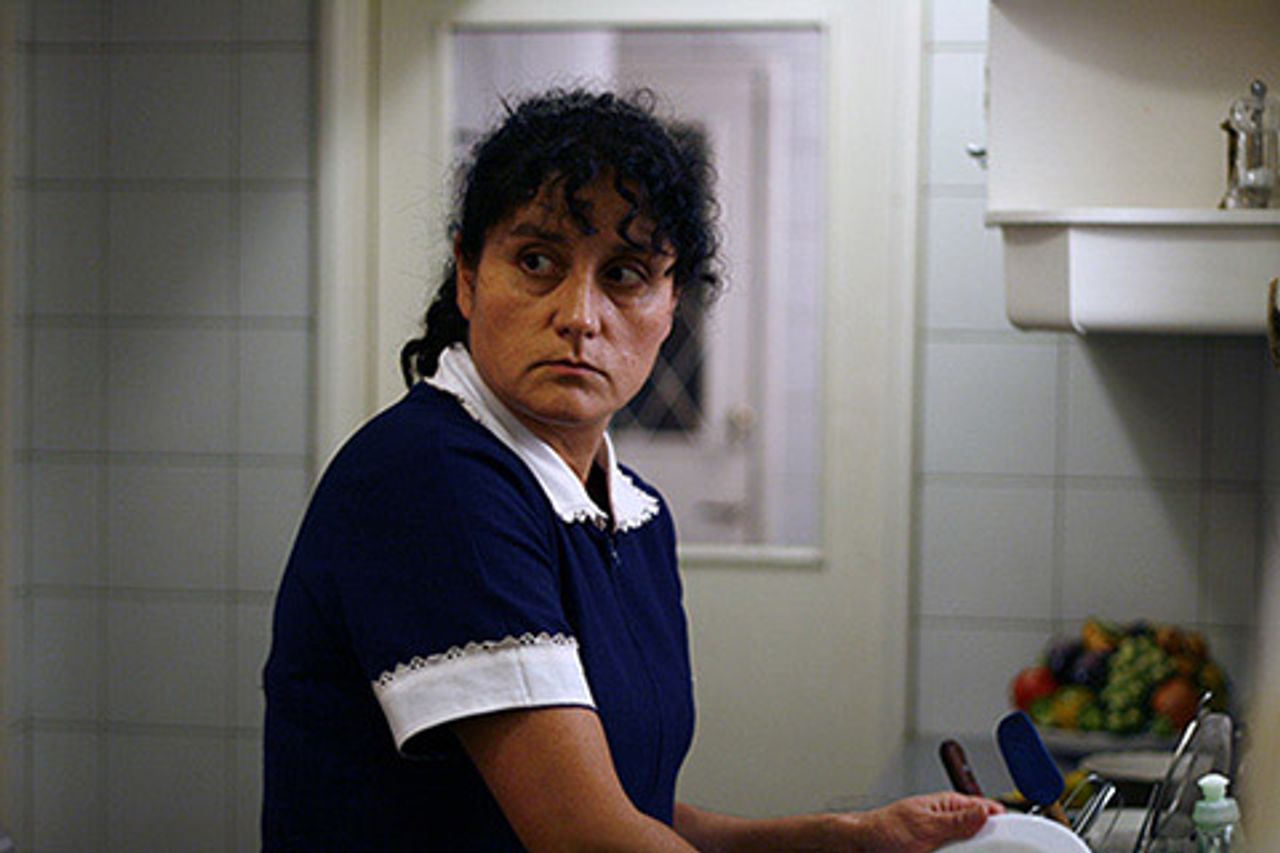This is the second in a series of articles on the 56th Sydney Film Festival held June 3-14. Part 1 was posted on July 9.
England’s most violent prisoner
Bronson, directed by Nicolas Winding Refn (best known for his trilogy Pusher), was this year’s winner of the $60,000 first feature prize. The movie is about Michael Gordon Peterson, who, according to the tabloid press, is England’s most violent prisoner. Peterson changed his name to Bronson in 1987, after the American actor Charles Bronson.
Fifty-five year old Bronson, a former circus strongman and bare-knuckle boxer, came from a lower-middle class family with connections to Britain’s Conservative Party. He was first imprisoned at the age of 22 in 1974, receiving a seven-year sentence for the armed robbery of a tobacconist, during which he allegedly stole only £26.18.
 Bronson
Bronson
Bronson still remains in jail, his sentence repeatedly extended following a series of brutal bashings, hostage-takings and/or blackmail of other inmates or prison warders. With the exception of about four months out of custody, Bronson has been imprisoned for over 30 years in more than 100 penal institutions, almost all of this time in solitary confinement. During the last ten years he has published 11 books, won awards for his poetry and art and is campaigning for release on parole.
There is no doubt that Bronson is an unstable and desensitised individual who needs long-term expert psychiatric treatment and support. Any film that tries to examine the social and psychological factors that produced such a man would be valuable. Nicolas Winding Refn’s Bronson, unfortunately doesn’t adopt this approach.
Tom Hardy’s performance as Bronson is strong, but the movie sheds no light on his early life and social circumstances, or how the penal regime brutalised and shaped this individual. While some aspects of his treatment in prison are dealt with, Bronson is largely superficial and unserious.
According to Refn, “It’s Bronson’s unending thirst for celebrity that has kept him in prison for so long. And it was this particular aspect of his personality that we tried to capture in the film. For some people it’s more about the actual person, but for me it’s more about the concept of creating somebody who changed his persona because of who he is, really.”
But why does Refn feel the need to mechanically separate the man from the persona that his protagonist has been trying to cultivate? Instead of delving into these questions and the deeper reasons for Bronson’s anti-social behaviour, the movie preoccupies itself with secondary issues, the external manifestations of the phenomenon.
To this end Refn employs various cinematic devices. The film is told in a series of episodes, punctuated by Bronson—dressed in a three-piece suit, and sporting a painted Pierrot clown face, or simply in his prison clothes—directly addressing the audience. There is a vaudevillian and cabaret element to these sequences, presumably to conform to the director’s emphasis on Bronson being a performer, forever seeking fame and celebrity.
The musical accompaniment—from the Pet Shop Boys to Verdi and Wagner—lends the movie a flippant tone, especially during some of the graphically violent scenes. During one of the brief depictions of his early life, the young Bronson punches his teacher to the ground and then hurls a table at him. The older Bronson offhandedly tells the audience: “I wasn’t all that bad and I had my principles.”
In fact, Bronson makes his only reference to broader social conditions—at the time of his first arrest—by dismissively explaining: “1974, tough time to be young in England; not a lot of opportunity around.”
Bronson, the movie and the individual, has many similarities with Chopper, the Australian feature about Mark “Chopper” Read and tends to wallow in its own graphic violence. Refn’s approach lacks any sense of protest about a brutal social order that has created Bronson and is only able to treat him like a wild animal.
Post-apartheid South Africa
Disgrace, the second feature of Australian director Steven Jacobs (La Spagnola [2001]), is an adaptation of the Booker Prize novel of the same name by the South African writer E.M. Coetzee.
Disgrace is set in post-apartheid South Africa and focuses on David Lurie (John Malkovich), a romance poetry professor at a Cape Town University, and his daughter Lucy (Jessica Haines), who is living alone on an Eastern Cape farm after her lover has left her. After being dismissed from his university post for having an affair with one of his students, David finds refuge at his daughter’s farm where its idyllic setting, however, belies underlying social tensions and complexities. The situation is compounded by a violent attack on Lucy’s house by three black youth who bash David, rape Lucy and ransack the place, shooting all the dogs.
Disgrace is a bleak film and dominated by an underlying sense of violence. Lucy’s friend Bev (Fiona Press), for example, runs a non-profit vet clinic, which, as well as treating animals, provides a service for locals to bring their dogs to be eliminated. The dogs are killed, put in a kombi van and taken to a rubbish dump to be incinerated.
Director Jacobs claims that what drew him to the book wasn’t its allegorical or symbolic references to post-apartheid South Africa, but its interesting protagonists, in particular David Lurie, a “complex, realistic character”. The movie, however, is dominated by symbolic references to contemporary South Africa.
Despite skilled cinematography, editing and some strong performances, in particular by Malkovich, Disgrace fails to live or even engage. The movie’s complexities and ambiguities for the most part feel schematic and contrived and even the rape scene fails to evoke an emotional response.
Overall Disgrace is reflective of a mood of despair amongst sections of the intelligentsia who hoped that the abolition of the racist apartheid system in the early 1990s and the coming to power of the African National Congress under Nelson Mandela would end oppression, inequality and provide a new social dawn. The benefactors of this transformation were not millions of ordinary people—black or white—who remain in poverty, but South African big business.
One review of Coetzee’s novel has praised the book because “It tells us something we all suspect and fear—that political change can do almost nothing to eliminate human misery. What it can do, he suggests, is reorder it a little and half-accidentally introduce a few new varieties.”
This passive hopelessness equally pervades Jacobs’s film version of Disgrace.
Solidarity against individualism
Ken Loach’s Looking for Eric is a limited work, but probably one of the better movies screened in the Official Competition category.
 Looking for Eric
Looking for Eric
Eric Bishop (wonderfully played by Steve Evets) is a postal worker suffering a personal crisis, underscored at the beginning of the film when he attempts to commit suicide by driving the wrong way on a roundabout. He fails and comes off only slightly injured. Eric lives with his two dysfunctional stepsons—Ryan (Gerard Kearns) and Jess (Stephan Gums)—after his second wife leaves him. The main source of his misery is his regret at inexplicably abandoning his first wife Lily (Stephanie Bishop) when she was pregnant with their only child Sam (Lucy-Joe Hudson).
Eric Cantona, former Manchester United football legend and Bishop’s idol, appears in person to him while he is high on marijuana. Cantona then follows him everywhere and becomes his life coach and confidant. Cantona encourages Bishop to be courageous and proactive rather than internalise and individualise his problems. Most importantly he encourages him to seek help from his friends. Cantona insists that the most important part of his football career being a team player and the necessity for believing in the power of collective action.
After some trepidation, Bishop takes his advice and in the film’s denouement resolves a life threatening crisis involving one of his stepsons and a local gangster, with help from his friends.
Looking for Eric is warm, with likable characters and several amusing situations. Asked on the movie’s web site what audiences should take from the film, Ken Loach replied: “Just the fact that it's about friendship and about coming to terms with who you are. It’s a film against individualism: we’re stronger as a gang than we are on our own.... Although that seems an almost trite observation, it’s still not the spirit of the age. Or it hasn’t been the spirit of the age for the last 30 years, where people are your competitors, not your comrades.”
This is obviously a healthy sentiment and related to Loach’s genuine compassion for the working class. The movie’s weakest element however, is its rather implausible happy ending.
The veteran filmmaker is clearly reacting against the social atomisation of the working class that has occurred in the last decades under the labour and union bureaucracies. But his suggestion that “solidarity makes us strong” is too modest by half. After more than four decades in art and politics, for Loach to be satisfied with the message that individualism is bad and solidarity good is rather inadequate, to put it politely, and also, a little sad.
A story about a maid
The Maid (La Nana), directed by Sebastian Silva is an odd film about Raquel (Catalina Saavedra), a live-in house maid in the same household for over twenty years. According to Silva, Raquel is closely based on the live-in maid he has grown up with in his own household.
 The Maid
The Maid
The movie begins with Raquel’s surprise 41st birthday party organised by the family. Called into the dining room for the celebration she does so hesitantly, only to return to the kitchen immediately after the cake is cut. We see an unhappy, lonely woman with no life outside the home and family for which she works. Raquel becomes ill but attempts to alleviate her situation by hiring another maid fail dismally. Raquel becomes territorial and treats them as interlopers.
Things change when the family eventually employs another maid, Lucy (Mariana Loyola), an enthusiastic and self-confident young woman who successfully befriends Raquel. She succeeds in drawing Raquel out of her shell and improves her physical and emotional health. When Lucy finally leaves the Valdes family, she leaves behind a happy and changed Raquel.
Director Silva no doubt cares for the plight of the live-in-maids but his film is a fairly pedestrian work. Robert Altman’s Gosford Park (2001) Joseph Losey’s The Servant (1963) and even James Ivory’s Remains of the Day (1994) are all informed by a more critical approach and anger about a system that compels sections of the poor to devote their entire lives to the personal well-being of their employers. This is frustratingly absent from The Maid.
To be continued
